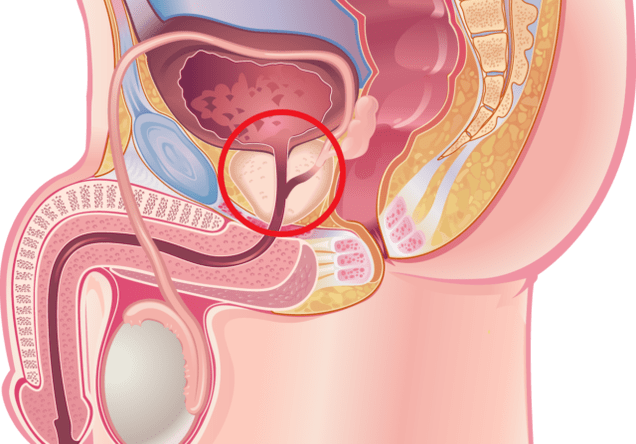Inflammation of the prostate or prostatitis ICD highlights under several numbers in its list. It all depends on the form of the pathology and the nature of its origin.
What is ICD?
There is a regulatory document that is used in the medical community and is regularly reviewed by the World Health Organization. It contains a list of all diseases and pathologies that occur in humans. It is known as the International Classification of Diseases (ICD). Its main aim is to provide assistance in the examination of the patient's condition and to create optimal conditions for this through the systematic collection of the available data. Information is collected worldwide and encrypted under certain names. It can be supplemented at any time and accessed for further studies.
Important! The ICD table contains classes and groups marked with codes. One heading can contain multiple forms and manifestations of the same disease. For the sake of simplicity, the entry is arranged in alphabetical order.

Diseases of the prostate according to ICD-10
The list of diseases includes:
- acute prostatitis ICD 10 41, 0;
- chronic prostatitis ICD 10 41, 1;
- Abscess of the prostate - 41, 2;
- Prostatocystitis - 41, 3;
- other inflammatory conditions of the prostate - 41, 8;
- unspecified inflammatory disease of the gland - 41. 9.
A normal person does not need to know the ICD coding. Only a doctor can decipher and encrypt the diagnosis.
Prostatitis according to ICD-10
Prostatitis code according to ICD 10 - 41. If benign hyperplasia develops in the organ, the disease is designated under a different number. Adenomas of the prostate code according to ICD 10 in adults are registered with numbers from 40 to 51. These headings include various fibroids and uterine fibroids.
It is one of the most common urological diseases that affect men of all ages. In general, the inflammatory process in the glandular tissue is most often observed in a chronic form with no visible acute signs at the beginning.
Experts classify the disease according to the type of course:
- acute, occurs in 50% of patients not older than 30-35 years. Mostly related to bacterial infections;
- chronic. It does not manifest itself for a long time and can develop against the background of an infectious process.
Due to the occurrence, it happens:
- Bacteria found within the organ;
- non-bacterial, in which pathological changes occur in a predominantly chronic form;
- viral, in which the entire genital area suffers.
They are differentiated by the type of structural changes:
- fibrous form. The growth of the glandular tissue is quite rapid and requires radical treatment. Clinically similar to the prostate adenoma ICD, of which 40, 0;
- calculating. It occurs when stones are formed in the tissues of the glandular organ. It is believed to be the harbinger of cancer;
- standing form. Occurs during physical inactivity, prolonged abstinence from sex.
Causes and symptoms
The pathology of the gland, both chronic and acute, is directly related to the conduct of an improper lifestyle, addiction to smoking and alcohol, as well as low physical activity.
The main reasons why the disease also develops in young men are:
- Infections transmitted through sexual contact: gonococci, Escherichia coli, chlamydia, etc. Frequent changes in sexual partners increase the risk of the disease;
- Congestion in the pelvic organs related to circulatory disorders;
- sedentary, sedentary lifestyle, physical inactivity;
- prolonged abstinence from sex, abuse of drugs that prolong sexual intercourse, deliberately delaying ejaculation during intimacy in order to prolong it;
- decreased immunity;
- psycho-emotional stress, severe stress;
- physical overwork;
- Hypothermia;
- Failure in the endocrine system;
- unbalanced diet;
- Addictions.
The signs of developing acute and chronic inflammation in the prostate are similar. The doctor will help identify the form of the disease after examination and diagnosis.
particularities
The acute form is accompanied by severe clinical symptoms, and all tissues of the glandular organ are involved in the pathological process. Therefore, the disease is painful, difficult: with an increase in body temperature, signs of general intoxication.
The patient complains of:
- Heaviness and pain in the groin, pelvic area, lower back;
- a feeling of squeezing the rectum;
- increased need to urinate, including at night;
- Urethral pain after ejaculating and emptying the bladder.
In the chronic form of pelvic disease, some men experience pain of varying intensity, erection and potency problems. In 95% of cases the disease is practically asymptomatic.

ICD codes for acute and chronic prostatitis
Chronic prostatitis ICD code 41. 1 with all adverse factors may get worse. An acute inflammation of ICD 41, 0 leads to edema of the glandular tissue, which is afflicted with acute urinary retention.
Such diseases lead to serious complications without proper treatment:
- Obstruction of the bladder;
- the development of male infertility;
- Narrowing and scarring of the urethral canal;
- recurrent cystitis;
- Pyelonephritis and other diseases of the kidneys;
- Suppuration of the glandular tissue, which requires immediate medical intervention;
- Sepsis, which most often develops in people with weakened immunity.
Diagnosis of pathology
In some cases, a single rectal exam and familiarization with the patient's condition are sufficient to make a diagnosis. However, the diagnosis of inflammation is made mainly using laboratory and instrumental examination methods.
The patient is referred to:
- Blood and urine tests to check for infection and inflammation;
- Analysis of prostate secretions;
- Ultrasound examination of the prostate, kidneys, bladder;
- Urethrocytoscopy;
- MRI of the pelvic organs;
- PSA blood tests;
- Biopsy;
- Roentgen.
One of the most effective diagnostic methods is the digital rectal examination of the prostate. Although the organ is very sensitive in the acute form, the procedure can cause severe pain for the patient.
Treatment tactics
Chronic prostatitis, the ICD code of which is listed in the international registry of diseases, requires complex treatment. The patient is advised to correct diet, change lifestyle, give up harmful addictions, and eat right.
Also appointed:
- Medication. It relieves pain, relieves inflammation, activates the regeneration of damaged cells of the glandular organ. It mainly uses suppositories, as well as antibiotics.
- Prostate massage. It is considered the most effective way to get rid of stagnant processes in the gland. It is carried out independently or with the help of a specialist. The procedure is considered uncomfortable, but it is imperative to perform it.
- Balneotherapy. With the help of mineral waters in sanatoriums, men manage to cope with the chronic form. It is useful to both drink medicinal water and bathe in it.
- Physical therapy. Thermal physiotherapy gives excellent results. It helps to absorb medication quickly, relieve general symptoms, and increase blood flow to the problem organ.
- Diet is an important step in therapy. The convalescent diet should contain vitamins, fiber, amino acids and minerals. You have to avoid junk food (pickles, marinades, smoked meat, fried, fatty foods). The list of desirable products includes sour milk drinks, lean meat and fish, nuts, dried fruits, pumpkin seeds.
Surgery is rarely used for chronic inflammation, when other methods of treatment do not have a positive effect or purulent processes have begun.
Acute requires the use of drugs, the use of microclysters, rectal suppositories, analgesics, pain relievers. The patient is shown bed rest and denial of intimacy. Once the acute period is over, prostate massage and physical therapy are prescribed. With this type of disease, it is very important to choose the necessary drugs. This is only possible after a correct diagnosis. What kind of means is prescribed and in what dosage, says the specialist.
prophylaxis
In order not to develop and aggravate prostatitis, the ICD code 10 in adults is listed under number 41, you should adhere to the following rules:
- lead an active and healthy lifestyle. If it is not possible to visit the gym, then it is necessary to do morning exercises, warm up during the work day and run more. A kind of gym serves as a staircase that a person climbs up to their home every day;
- avoid hypothermia: do not sit on a cold surface, dress appropriately for the weather, etc. ;
- in case of constipation, include intestinal relaxing foods in the diet, take mild laxatives. If the disorder persists, it is advisable to see a specialist;
- Regulate sex life. Prolonged sexual abstinence is the first step in developing glandular diseases. If there is no steady sexual partner, you can temporarily replace it with masturbation, but you should not engage in this activity;
- Avoid promiscuous intercourse without barrier contraception. Sexually transmitted diseases may not go unnoticed at first, but they severely damage the tissues of the gland and cause an infectious form of prostatitis;
- At the slightest suspicion of a sexually transmitted infection, you should see a venereologist or urologist. It is enough to undergo an examination to find out what the reason for the appearance of unpleasant symptoms;
- It is necessary to visit a urologist at least once a year to exclude the likelihood of the onset of the disease.
reviews
- "The international classification is of no small importance in the treatment of prostate inflammation of any etiology, as the ICD-10 code enables you to precisely determine the nature of the disease, make a diagnosis and carry out effective therapeutic measures. "
- "My father had a prostate adenoma. The ICD code was deciphered by the doctor when it was found with the diagnosis. The stage is quite neglected, the gland has almost tripled in size. An operation was planned and was successful. Recovery was delayed as old age (over 60 years of age) and other chronic illnesses made themselves felt. Now he has no complaints about the genitourinary system ".
- "Chr. Prostatitis ICD 41. 1 is on my card. I have had this disease for a long time, but it very rarely gets worse because I do everything I can to avoid acute symptoms. The doctor said chronic diseases do not go away. ""They can't appear for a very long time if you properly monitor your health. That's why I exercise - I run in the morning every day, exercise, don't drink alcohol, don't smoke. "
























